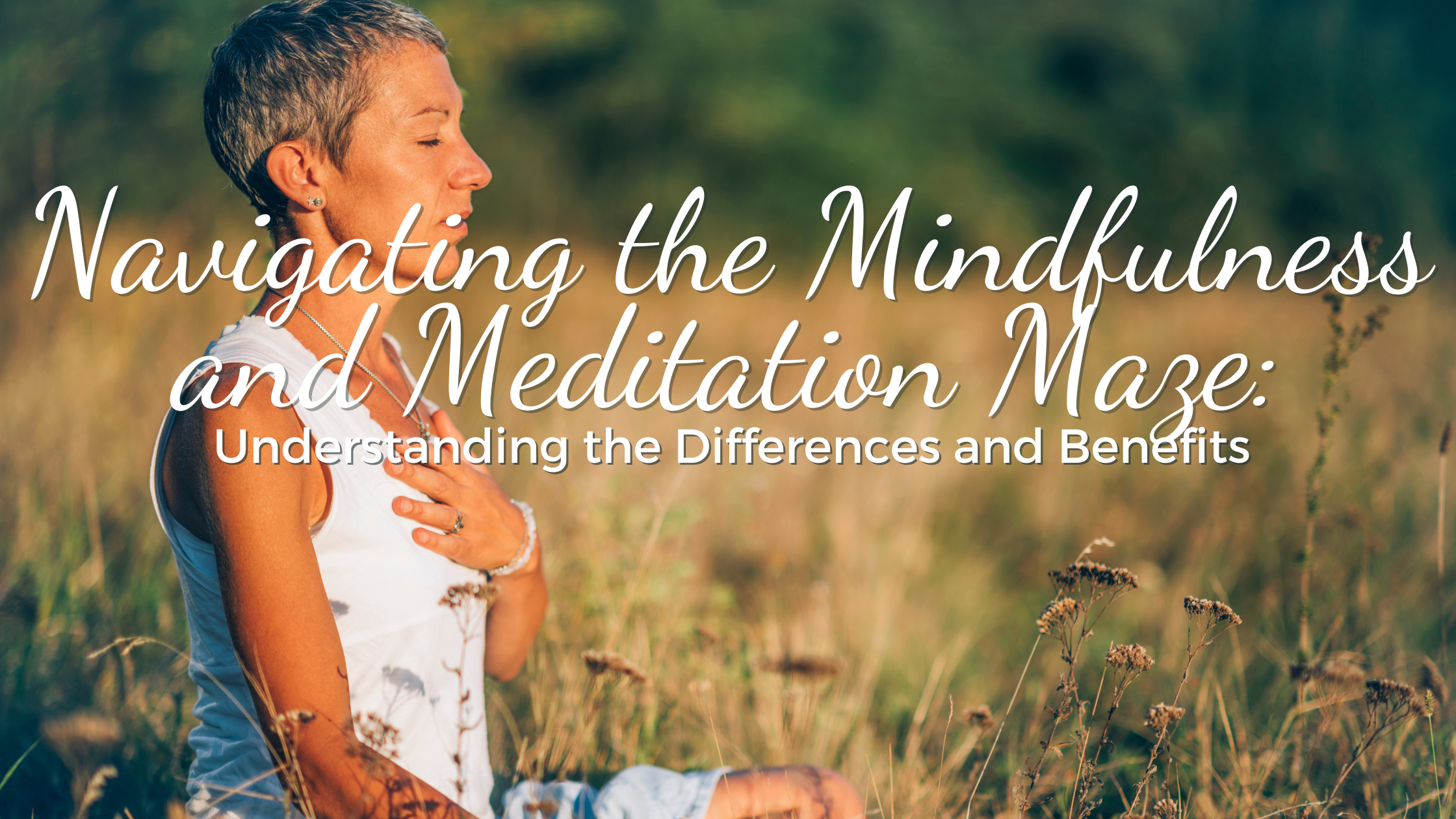Navigating the Mindfulness and Meditation Maze: Understanding the Differences and Benefits
In my journey as a mindfulness teacher, I've often encountered a common question that newcomers to these practices frequently ask: "Are mindfulness and meditation the same thing?" The truth is, while these terms are often used interchangeably, they represent distinct practices with unique definitions, techniques, and benefits. In this blog post, I'll embark on a journey to explore the fascinating world of mindfulness and meditation, shedding light on why they are frequently confused, and help you understand how they can complement each other for a holistic approach to well-being.
The Definition Debate: Exploring the Mindfulness-Meditation Confusion
Let's start by addressing the elephant in the room – the confusion surrounding the definitions of mindfulness and meditation. At first glance, it's easy to see why people get them mixed up. Mindfulness and meditation share common ground as both involve a degree of inner reflection and mental presence. However, they are not synonymous.
Mindfulness is the practice of being fully present and aware in the moment, without judgment. It's about paying attention to your thoughts, feelings, and surroundings with acceptance and kindness. On the other hand, meditation is a broader term that encompasses a variety of techniques aimed at achieving a specific mental or spiritual goal. Meditation can involve mindfulness, but it can also involve focused attention, guided imagery, or mantra repetition.
Techniques and Practices: Unraveling the Distinctions
Now that we have a clearer understanding of the definitions, let's delve into the techniques and practices associated with mindfulness and meditation, highlighting their differences.
Mindfulness techniques often involve activities like deep breathing, body scans, or simply observing your thoughts and sensations. It's about cultivating awareness in everyday activities, such as eating mindfully or walking in nature. The key here is to be fully present in whatever you're doing.
Meditation techniques, on the other hand, can vary widely. Some involve focusing on a single point of attention, like your breath or a candle flame. Others may guide you through visualisations or invite you to repeat a mantra. The goal is often to quiet the mind and achieve a state of inner calm.
Benefits of Mindfulness: Embracing the Present Moment
Now that we've clarified the techniques, let's talk about the unique benefits of mindfulness. One of the core advantages of mindfulness is its ability to enhance your awareness of the present moment. It can help reduce stress, anxiety, and rumination by encouraging non-judgmental observation of your thoughts and feelings. This heightened awareness can lead to better emotional regulation and improved relationships, as you become more attuned to your own reactions and those of others.
Benefits of Meditation: The Quest for Inner Peace
Turning our attention to meditation, it offers distinct advantages as well. Meditation practices often lead to deep relaxation, which can reduce the physical symptoms of stress. Regular meditation can improve concentration, increase self-awareness, and promote a sense of inner peace. Some forms of meditation, such as loving-kindness meditation, focus on fostering compassion and empathy, which can positively impact your relationships and social interactions.
Combining Mindfulness and Meditation: A Holistic Path to Well-Being
While mindfulness and meditation have their own unique benefits, the beauty lies in how they can complement each other. As a mindfulness teacher, I often encourage individuals to explore both practices. Mindfulness can serve as a foundational skill, enhancing your ability to be present in your daily life. When combined with meditation techniques, it can deepen your practice, allowing you to access even greater states of relaxation and self-awareness.
Consider starting your day with a brief mindfulness exercise, grounding yourself in the present moment. Then, incorporate a meditation session to delve deeper into your inner world, whether it's through focused attention or guided imagery. This combination can create a powerful synergy, providing you with tools to navigate life's challenges with greater resilience and a heightened sense of well-being.
In conclusion, while mindfulness and meditation may share similarities, they each have their own distinct definitions, techniques, and benefits. Embracing both in your daily life can offer a holistic approach to well-being, helping you cultivate awareness, inner peace, and emotional resilience. So, the next time someone asks if mindfulness and meditation are the same thing, you can confidently say, "No, they're not the same, but they work beautifully together to enrich our lives.



